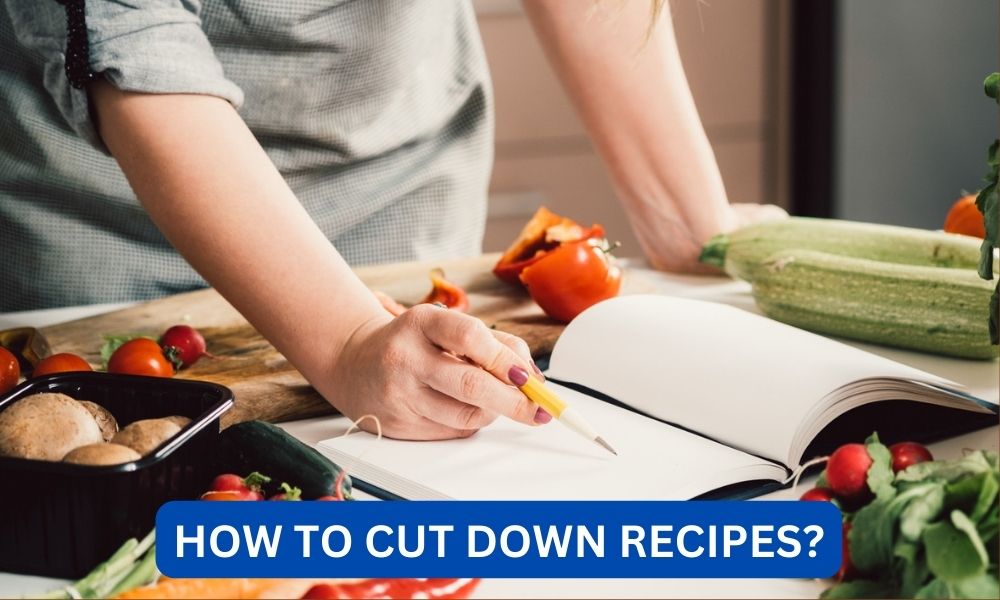Cooking is a form of art that requires precision and attention to detail. One of the essential skills in cooking is the ability to follow a recipe accurately. However, there are times when we need to adjust the recipe to fit our needs, whether it’s to serve a smaller or larger group, accommodate dietary restrictions, or simply use the ingredients we have on hand. This is where the skill of cutting down recipes comes in handy.
Cutting down a recipe means reducing the ingredients and adjusting the cooking time to make a smaller portion of the original dish. It may seem like a simple task, but it requires some knowledge and understanding of cooking techniques. In this article, we will explore the reasons why you may need to cut down a recipe, the techniques and tips for doing it successfully, and some common mistakes to avoid. So, let’s get started!
Contents
Why Cut Down Recipes?
There are various reasons why you may need to cut down a recipe. Some of the most common ones include:
- Serving a smaller group: Most recipes are designed to serve 4-6 people, but what if you’re only cooking for 2? Cutting down the recipe will help you avoid food waste and save money.
- Dietary restrictions: If you or someone in your family has dietary restrictions, such as allergies or intolerances, you may need to modify the recipe to accommodate them.
- Availability of ingredients: Sometimes, you may not have all the ingredients listed in the recipe. Cutting down the recipe and using what you have on hand can save you a trip to the grocery store.
- Experimenting with flavors: Cutting down a recipe can also be a way to experiment with different flavors and ingredients without committing to a large batch.
Techniques for Cutting Down Recipes
Now that we know why we may need to cut down a recipe, let’s explore some techniques for doing it successfully.
Read:Do they have recipes on masterchef1. Use Fractions
The easiest way to cut down a recipe is to use fractions. For example, if a recipe calls for 2 cups of flour and you want to make half the amount, you can simply use 1 cup instead. However, this method may not work for all ingredients, especially when it comes to small measurements like teaspoons and tablespoons. In such cases, you can use measuring spoons to get the exact amount needed.
2. Use Ratios
Ratios are another useful tool for cutting down recipes. A ratio is a relationship between two or more ingredients in a recipe. For example, a basic pancake recipe has a ratio of 2:1:1 for flour, milk, and eggs. This means that for every 2 cups of flour, you need 1 cup of milk and 1 egg. So, if you want to make half the amount, you can use 1 cup of flour, 1/2 cup of milk, and 1/2 an egg (which can be achieved by beating an egg and using half of it).
3. Adjust Cooking Time
When cutting down a recipe, it’s essential to adjust the cooking time accordingly. A smaller portion will cook faster than a larger one, so keep an eye on the dish and check for doneness earlier than the original cooking time. You can also use a thermometer to check the internal temperature of the food to ensure it’s cooked through.
Read:don’t mix it recipes4. Consider the Shape of the Pan
The shape of the pan can also affect the cooking time and the final result of the dish. For example, if you’re making a cake and cutting down the recipe, using a smaller pan will result in a thicker cake that will take longer to bake. On the other hand, using a larger pan will result in a thinner cake that will cook faster. So, make sure to choose the right pan size for the desired outcome.
5. Adjust Seasonings
When cutting down a recipe, it’s essential to adjust the seasonings accordingly. For example, if a recipe calls for 1 teaspoon of salt and you’re making half the amount, you should use 1/2 teaspoon instead. However, this may not apply to all seasonings, especially those with strong flavors like garlic or chili. In such cases, it’s best to taste the dish and adjust the seasonings to your liking.
Tips for Cutting Down Recipes
Now that we know the techniques for cutting down recipes let’s explore some tips that will help you do it successfully.
1. Start with a Smaller Portion
If you’re new to cutting down recipes, it’s best to start with a smaller portion. For example, if a recipe serves 4, try cutting it down to serve 2 first. This will help you get a better understanding of the techniques and how they affect the final result.
Read:how to create a recipe book for free2. Keep Notes
When cutting down a recipe, it’s essential to keep notes of the changes you make. This will help you remember what worked and what didn’t, and you can make adjustments accordingly the next time you make the dish.
3. Use a Kitchen Scale
A kitchen scale is a handy tool when it comes to cutting down recipes. It allows you to measure ingredients accurately, especially when dealing with small measurements. It’s also helpful when using ratios, as you can measure the ingredients in the correct ratio without having to do any conversions.
4. Be Mindful of Cooking Techniques
When cutting down a recipe, it’s essential to be mindful of the cooking techniques used. For example, if a recipe calls for braising, which involves cooking the food in a small amount of liquid, cutting down the recipe may result in the food drying out. In such cases, you may need to adjust the cooking technique or add more liquid to prevent the food from drying out.
5. Use Online Tools
There are many online tools and apps available that can help you adjust recipes to fit your needs. These tools allow you to enter the original recipe and the desired serving size, and they will calculate the new ingredient amounts for you. Some even allow you to adjust the measurements to your preferred unit of measurement.
Common Mistakes to Avoid
While cutting down recipes may seem like a simple task, there are some common mistakes that people make. Here are some of them and how to avoid them:
1. Not Adjusting the Cooking Time
As mentioned earlier, adjusting the cooking time is crucial when cutting down a recipe. Not doing so can result in overcooked or undercooked food. Make sure to keep an eye on the dish and check for doneness earlier than the original cooking time.
2. Forgetting to Adjust Seasonings
When cutting down a recipe, it’s essential to adjust the seasonings accordingly. Forgetting to do so can result in a dish that is either too bland or too salty/spicy. Make sure to taste the dish and adjust the seasonings to your liking.
3. Using the Wrong Pan Size
Using the wrong pan size can affect the cooking time and the final result of the dish. Make sure to choose the right pan size for the desired outcome.
4. Not Keeping Notes
As mentioned earlier, keeping notes of the changes you make when cutting down a recipe is crucial. Not doing so can result in forgetting what worked and what didn’t, and you may end up making the same mistakes the next time you make the dish.
Conclusion:
Cutting down recipes is a useful skill to have in the kitchen. It allows you to adjust recipes to fit your needs and preferences, avoid food waste, and save money. By using fractions, ratios, adjusting cooking time, and being mindful of cooking techniques, you can successfully cut down any recipe. Remember to keep notes, use a kitchen scale, and be mindful of common mistakes to avoid. With these tips and techniques, you can confidently modify any recipe to fit your needs and create delicious meals every time.









